Liposuction in Vilnius
Search and Compare the Best Clinics and Doctors at the Lowest Prices for Liposuction in Vilnius

Find the best clinics for Liposuction in Vilnius
With Medijump you can browse 3 facilities offering Liposuction procedures in Vilnius. The cheapest price available is $633 in Vilnius. And for the cheapest price globally, prices start from $120 in Ukraine.
Liposuction in Lithuania
Price: $ 633
Liposuction in Vilnius
Price: $ 633
Ukraine offers the best prices Worldwide
Price: $ 120
From 10 verified reviews
AGNĖ KULBYTĖ-PETRAUSKIENĖ, 23 December 2019
I have visited many times, doctor dermatologist Justė Kantauskaitė - a great specialist, left a wonderful impression both as a person and as a specialist in her field. Next time I would pick her again. My daughter also really enjoyed it!
From 42 verified reviews
Ieva Žentelytė, 15 September 2020
Thanks to surgeon A. Sklepavičius for taking care of his patients, professionalism and the fact that He heals people, discovers diseases. I was lucky to entrust my problems to this Doctor in capital letters. Happy patients and clinic with a doctor like A. Sklepavičius.
MedLT, located in Laisves, Vilnius, Lithuania offers patients Liposuction procedures among its total of 74 available procedures, across 10 different specialties. The cost of a Liposuction procedure starts from £1,154, whilst the national average price is approximately £836. All procedures and treatments are undertaken by the lead specialist at the Hospital, and they are not accredited by any recognized accreditations institutes
Compare Before & After Photos of _procedure_photos.phpLiposuction
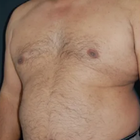
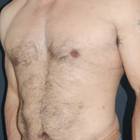
Front view

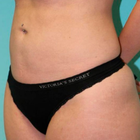
Half-side view
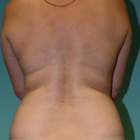
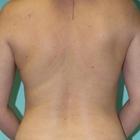
Full-side view
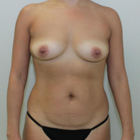
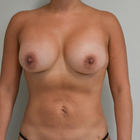
Front view
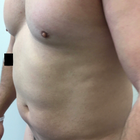

Half-side view
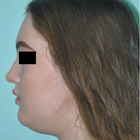
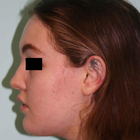
Full-side view
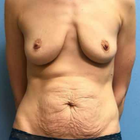

Front view
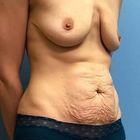

Half-side view
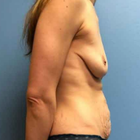

Full-side view
WHY US?
At Medijump, we're making medical easy. You can search, compare, discuss, and book your medical all in one place. We open the door to the best medical providers worldwide, saving you time and energy along the way, and it's all for FREE, no hidden fees, and no price markups guaranteed. So what are you waiting for?

Free

Best Price

Widest Selection

Risk-Free
What you need to know about Liposuction in Vilnius?

Liposuction is a cosmetic surgery that “sucks” out fat from areas that are hard to lose through a healthy diet and exercise, while liposculpture is the shaping of the skin back to its desired shape. Both are done in conjunction with one another at the same time. Most areas can be treated. Traditionally the most popular areas to treat are the stomach/abdomen, chin and neck, love handles, arms, and inner and outer thighs. Becoming more popular are the knees, calves and ankles, all with very successful results.
While liposuction can permanently remove fat cells and alter your body shape, it should not be viewed as a quick fix for individuals who are significantly overweight. The procedure works best for those who have already lost some weight themselves and are close to their ideal weight but need help tackling stubborn areas of fat in problem areas.
What is the cost of Liposuction in Vilnius?
When you're thinking about liposuction in Vilnius, one of the first things you probably wonder about is the cost. Here's the thing: the price isn't the same for everyone. It hinges on a few details like how many parts of your body you’re getting treated, how complex the treatment is, and the professional fee of your doctor. Costs for anaesthesia and the use of the surgical facility are also added to the bill. It's vital to remember, too, that because liposuction is often carried out for aesthetic reasons, normal health insurance might not cover it.
Can Liposuction be used as a weight-loss method?
Unwanted fats are very hard to get rid of especially if you are not a fan of exercise or diet. Liposuction, also known as Lipoplasty, liposculpture suction, lipectomy or simply lipo, basically eliminates unwanted fats by suctioning it away. Despite the growing trend of non-invasive fat reduction treatments, liposuction is still the leading procedure to remove stubborn fat cells.
Liposuction permanently removes fat cells and enhances the shape of your body. A plastic or dermatologic surgeon usually performs this type of procedure on the patient’s belly, hips, thighs, buttocks, arms, back or face to improve their shape. Furthermore, liposuction can be done together with other plastic surgeries such as facelifts, breast reductions, and tummy tucks.
This treatment procedure is particularly used for aesthetics, mainly to improve a person’s appearance. In most cases, maintaining and achieving such positive results will depend on your lifestyle.
What does a Liposuction Procedure Involve?
Before you have the treatment, a series of tests are required to ensure if you are fit for the surgery. You will also need to sign a consent form to confirm that you are fully aware of the risks, benefits and possible alternatives to the procedure.
You will likely be put under using general anesthesia, which can last for 1 to 4 hours. An epidural can also be used for procedures on the lower part of the body, although this is becoming increasingly unpopular now. Alternatively, you may be given local anesthesia if the procedure will be on small areas of your body. You may be asked to stand up during the procedure to ensure proper fat removal, but you will not feel any pain.
Tiny incisions will be made in the areas of interest through which a cannula can fit. This thin tube-like device is connected to a vacuum, capable of suctioning the fat from within your body. There are a few common techniques used, including Laser-Assisted or SmartLipo, UAL (Ultrasound-Assisted Lipo) or the most popular technique, Tumescent Lipo - this involves the pre-injection of a saline solution to help separate the fat from the blood, so less blood is removed. You'll discuss the best option with your surgeon before confirming what type of Liposuction is best for you.
How Long Should I Stay in Vilnius for a Liposuction Procedure?
Generally, patients who have received general anesthesia will be required to spend the night in the hospital (in-patient). Patients, who have had local anesthesia, may be able to leave the hospital on the same day.
After the operation, you will have to wear support bandages (support corset, bandages or elasticated support) whilst healing. Expect some pain, swelling and bruising during the following days and weeks. Your surgeon will prescribe medication to help control your pain and antibiotics to reduce the risk of infection. Furthermore, your stitches may be removed during your follow-up appointment with your surgeon. You should expect to stay in Vilnius for about a week post-op to allow for the initial recovery and check-up appointments, which will include the removal of stitches.
What's the Recovery Time for Liposuction Procedures?
Numbness in the specific area of your body where the fat was removed is to be expected for the first couple of weeks, usually, this will improve after 6 to 8 weeks. You may also need to wait a few days before going back to work. As for your normal activities, especially exercise, you may have to wait a few weeks before resuming.
Overall, the recovery time may vary from patient to patient. In most cases, patients can return to light activities within 2 to 3 days and are also able to go back to work after two weeks. As for the results, you may see visible results after 3 to 4 weeks, however, it can take several months before you see the final outcome.
What sort of Aftercare is Required for Liposuction Procedures in Vilnius?
Just like any other cosmetic surgery, following your surgeon’s aftercare instructions is vital in achieving and maintaining the best results. If the procedure was done above your waistline, you may be advised to sleep propped on pillows to have elevation on the specific area. This helps drain the fluids and prevent them from pooling. Furthermore, applying cold compress on a certain area where the procedure was performed is highly recommended, this will reduce inflammation and bruising especially during the first few days.
What's the Success Rate of Liposuction Procedures in Vilnius?
Liposuction remains one of the most popular cosmetic surgeries with a success rate of 85%, offering patients the enhanced body shape they've been craving. However, just like any other surgeries, it also comes with possible risks. Complications vary and are dependent on the procedure is as well as your surgeon’s skills. Possible risks and complications include:
- Severe bruising
- Inflammation
- Blood clot forms in veins, causing inflammation and complications (Thrombophlebitis)
- Kidney or Heart problems - changes in the body's fluid levels during the procedure may cause kidney or heart problems.
- Pulmonary embolism - when fat gets into your blood vessels and travels to your lungs, eventually, blocking your lungs.
Are there Alternatives to Liposuction Procedures in Vilnius?
CoolSculpting – is a fat freezing liposuction alternative. This is more suited to people who are close to their target weight but still have unwanted pockets of fat. Coolsculpting is a fat-freezing procedure that crystalizes your fat cells until they break apart painlessly.
Ultrashape - a non-invasive procedure that doesn’t require the need for anesthesia. This treatment procedure will make use of a body sculpting device that vaporizes fat cells within the targeted area with waves of ultrasound energy. Fat cells are permanently flushed out of your body, giving you a more natural-looking fat loss.
How does Liposuction differ from CoolSculpting and Vaser liposuction in terms of technique?
Liposuction vs Vaser Liposuction
Like traditional liposuction, the purpose of Vaser liposuction is to change the contours and shape of the body by removing persistent fat deposits. The word Vaser is actually an acronym for Vibration Amplification of Sound Energy at Resonance. This specialized ultrasound technology breaks down the fatty tissues using ultrasonic frequency waves, which is why it's often referred to as Ultrasonic Liposuction or Ultrasound Liposuction.
Liposuction vs CoolSculpting
CoolSculpting is the new non-invasive, freezing method used to also change the body contours and shape, however, this method does not require the use of a cannula so there is no damage to the overlying skin. Instead, it involves the controlled application of cooling localized fat deposits, which are then expelled from the body through the kidneys.
How safe is Liposuction in Vilnius?
Liposuction, when performed in Vilnius by a qualified and experienced plastic surgeon, is generally considered safe. The procedure has evolved significantly since its introduction, with advancements in technology and techniques contributing to its safety profile. Most liposuction procedures are performed without major complications, and patient satisfaction rates are high. However, as with any surgery, there is always an inherent risk.
It's crucial to have a detailed discussion with your surgeon regarding the safety of the procedure. The surgeon should be open about potential risks and complications, and explain how they would handle them should they arise. Factors such as your overall health, medical history and the area or the amount of fat being removed can influence the risks associated with liposuction.
What Should You Expect Before and After a Liposuction?
After your surgery, expect some swelling and discolouration in the areas where the fat was removed. To assist in healing and lessen swelling, you'll be given a snug garment to don. It is advisable to arrange for someone to take you home after the surgery and be with you for the initial day after the procedure. Though some changes will be noticeable soon after the surgery, the best results will take shape once the swelling has fully dissipated, which usually takes around 3-6 months. Regular check-ins with your surgeon are vital to ensure your recovery is progressing as expected.
As the wise saying goes, "Your waistline is your lifeline." Liposuction does remove fat cells for good, but weight gain post-procedure can cause the leftover fat cells to grow, potentially in different areas of your body. Therefore, a balanced diet and regular exercise are crucial for maintaining your new silhouette.
How Can I Prepare for Liposuction in Vilnius?
Prepping for a liposuction surgery in Vilnius? You've got this! Here are some absolutely essential steps you should follow for a smooth and successful procedure:
- Consultation: First things first. Have an in-depth consultation with your plastic surgeon. They'll assess your health status and discuss your goals. Taking this information into account, they'll provide some key instructions for you leading up to the surgery day.
- Healthy Lifestyle: In preparation for the procedure, it's of utmost importance to maintain a healthy lifestyle. Get in regular exercise. Eat balanced meals. Hydrate frequently. If you smoke, now is the time to quit. And hold off on alcohol. Your body will be on the fast track to healing, thanks to these healthy habits.
- Follow Instructions: Your surgeon will give you a set of preoperative instructions. Avoiding certain medications or supplements might be on the list. Stick to these guidelines religiously.
- Support Person: And lastly, on surgery day, make sure to have a trusted friend or relative by your side. Once the procedure is completed, you'll need a safe ride back home.
Whilst the information presented here has been accurately sourced and verified by a medical professional for its accuracy, it is still advised to consult with your doctor before pursuing a medical treatment at one of the listed medical providers
No Time?
Tell us what you're looking for and we'll reachout to the top clinics all at once
Enquire Now

Similar Procedures in Vilnius
Prices Start From $31

Prices Start From $120

Prices Start From $120

Prices Start From $120

Prices Start From $120

Prices Start From $31

Prices Start From $120

Popular Procedures in Vilnius
Prices Start From $111

Prices Start From $931

Prices Start From $76

Prices Start From $236

Recommended Medical Centers in Vilnius for Liposuction

- Interpreter services
- Translation service
- Religious facilities
- Medical records transfer
- Medical travel insurance
- Health insurance coordination
- TV in the room
- Safe in the room
- Phone in the room
- Private rooms for patients available

- Interpreter services
- Translation service
- Religious facilities
- Medical records transfer
- Medical travel insurance
- Health insurance coordination
- TV in the room
- Safe in the room
- Phone in the room
- Private rooms for patients available

- Interpreter services
- Translation service
- Religious facilities
- Medical records transfer
- Medical travel insurance
- Health insurance coordination
- TV in the room
- Safe in the room
- Phone in the room
- Private rooms for patients available

- Interpreter services
- Translation service
- Religious facilities
- Medical records transfer
- Medical travel insurance
- Health insurance coordination
- TV in the room
- Safe in the room
- Phone in the room
- Private rooms for patients available

- Interpreter services
- Translation service
- Religious facilities
- Medical records transfer
- Medical travel insurance
- Health insurance coordination
- TV in the room
- Safe in the room
- Phone in the room
- Private rooms for patients available

- Interpreter services
- Translation service
- Religious facilities
- Medical records transfer
- Medical travel insurance
- Health insurance coordination
- TV in the room
- Safe in the room
- Phone in the room
- Private rooms for patients available

- Interpreter services
- Translation service
- Religious facilities
- Medical records transfer
- Medical travel insurance
- Health insurance coordination
- TV in the room
- Safe in the room
- Phone in the room
- Private rooms for patients available
Liposuction in and around Vilnius
About Vilnius
Vilnius is the capital of Lithuania and is also the largest city in the country, with a population of around 564,147. Vilnius was once referred to as the ‘Jerusalem of the north’ but the Jewish community was largely wiped out in WWII. The city does not hide its battle relics. Tourists will find museums dedicated to the Holocaust and preserved the KGB torture chamber. Other than its fascinating history, Vilnius also offers spectacular architecture, trendy bars, and hot-air balloons.
Vilnius is emerging as a medical tourism destination. Every year, medical tourism in Vilnius continues to expand and evolve. Medical treatments in Vilnius are gaining a powerful reputation among medical tourists. The vast majority of the medical tourists coming to Vilnius are from the Middle East, the United States, and Western Europe. Many tourists travel for Breast Augmentation or other cosmetic surgery. Kardiolita Hospital is one of the most popular medical facilities in the city. There are many reasons why local and international medical tourists come to Vilnius, including:
- Medical facilities with international standards such as JCI accreditation.
- Highly educated doctors and medical practitioners.
- Comprehensive diagnosis in just a single day.
- Foreign language speaking doctors and health care staff.
- Modern and secure equipment.
- Affordable prices for a wide range of medical treatment.
Popular Areas in Vilnius
Vilnius is a driving force behind Lithuania’s tourism sector. The city has affordable attractions, accommodations, and restaurants, Historical landmarks, extraordinary architecture, green spaces, and an array of cafes making the city a special place to visit.
- Palace of the Grand Dukes of Lithuania is located in the heart of Vilnius. The building has a Renaissance, Gothic, and early Baroque architectural styles. The reconstructed palace is now transformed into a museum with 4 exhibition tour routes related to the historical functions. A guided tour is in English, Russian, and German is available for tourists.
- Museum of Occupations and Freedom Fights (KGB Museum) is a museum with the darkest history in Vilnius. It is located in the former KGB building and preserved exactly how the KGB officers left the building. A museum is an excellent place for tourists who want to learn more about history.
- Antakalnis Cemetery in Vilnius is arguably one of the most interesting graveyards in Europe. The cemetery is the final resting place of Lithuanian leaders and locals lost to war. The most notable monuments are the Memorial of Red Army Soldiers and the monument of the victims of January 13, 1991.
- Gediminas’ Tower of the Upper Castle is the remnant of a brick castle built by the Duke of Lithuania, Vytautas Magnum. Tourists can get onto the top of the Gediminas Hill by foot or by the provided modern lift. While in the modern lift, tourists can see panoramic views of Vilnius along with the River Neris.
Weather and Climate in Vilnius
Summers in Vilnius is warm and dry, with occasional showers and chilly days. Summers are short, lasting for around two months from June to August. The average temperature in the summer is around 11 °C to 22 °C. Summers are usually the busiest time for the city’s tourism.
Although autumn is exceptionally beautiful and has many sunny days, the temperature will cool down rapidly during this season. It can get as low as -1°C in mid-November.
The winters are freezing when the average temperature plummets to -9°C. The temperature will remain below zero until March. Winters in the city can be an amazing time. However, it can be difficult in rural areas.
Spring usually arrives late in April and does not last very long. The temperature in Spring is cool and the green spaces are blossoming.
Getting Around in Vilnius
Vilnius International Airport is the largest airport in Lithuania that connects the country with European cities. It is the hub for air Baltic and Get Jet Airlines. The airport serves many major airlines, as well as budget airlines such as Ryanair and Wizz Air.
Tourists can take the airport taxis to the city center. The taxis can be found in front of the arrivals terminal. A ride to the city center should cost around 10 EUR to 18 EUR. The city bus is another option to travel to Vilnius city center. It is more affordable than taxis, with a single ticket costs around 1EUR.
Walking is the best mode of transportation for exploring the Old Town. A good portion of Vilnius’s attractions is located within walking distance. Buses and trolleybuses are also available, tickets cost 1 EUR which can be paid directly to the driver. Taxis are not very recommended because many taxi drivers are known to cheat foreigners. Uber is available.
Tourist Visas in Vilnius
European Union citizens, American, Canadian, Australian, and British can stay in Vilnius for up to 90 days. Citizens of other countries must apply and obtain a visa before entering Lithuania
The country is part of the Schengen Area, tourists who already hold a Schengen visa does not have to apply for a new visa to enter Lithuania. A passport valid for at least three months beyond the length of stay is required.
Additional Information
- Local Currency: Since Lithuania adopted the euro in 2015, the official currency is the euro. 1 USD is equivalent to 0.88 EUR.
- Money & Payments: Tourists can withdraw money from ATMs. Visa and MasterCard credit cards are mostly accepted in hotels and restaurants. Tourists can tip 10% in restaurants if the service is good. Always tip in cash even when you’re paying with credit or debit cards.
- Local Language: The official language is Lithuanian. Most people in the tourism area and the younger generation can speak English fluently. A large number of the population also speaks Russian and Polish.
- Local Culture and Religion: Christianity (specifically Catholic) is the major religion in Vilnius. Small groups of the population follow Judaism, Islam, and other religions.
- Public Holidays: Vilnius celebrates major Christian religious holidays. The city also hosts many annual festivals such as Capital Days in September, Culture Night and Trakai Medieval Festival in June, Street Musician’s Day in May, and Independence Day of the Republic of Uzupis in April.
Popular Searches
- Plastic Surgery in Thailand
- Dental Implants in Thailand
- Hair Transplant in Thailand
- Breast Augmentation Thailand
- Gastric Sleeve in Thailand
- Gender Reassignment Surgery in Thailand
- Laser Hair Removal in Bangkok
- Botox in Bangkok
- Dermatology in Bangkok
- Breast Augmentation in Bangkok
- Coolsculpting in Bangkok
- Veneers in Turkey
- Hair Transplant in Turkey
- Rhinoplasty in Turkey
- Stem Cell Therapy in Mexico
- Rhinoplasty in Mexico
- Liposuction in Mexico
- Coolsculpting in Tijuana
- Rhinoplasty in Korea
- Scar Removal in Korea
- Gastric Sleeve in Turkey
- Bone Marrow Transplant in India
- Invisalign in Malaysia
- Plastic Surgery in the Dominican Republic
- Tummy Tuck in the Dominican Republic
- Plastic and Cosmetic Surgery in Poland
- Rhinoplasty in Poland
- Hair Implant in Poland
- Dental Implants in Poland
- IVF in Turkey


